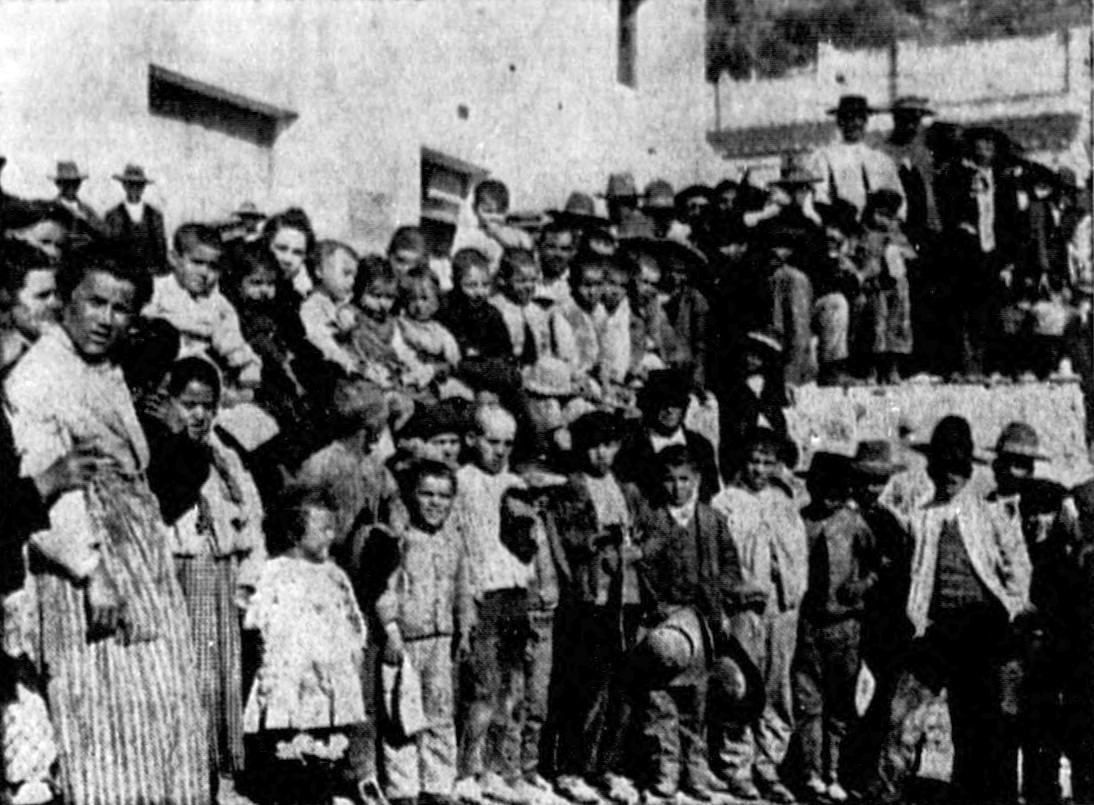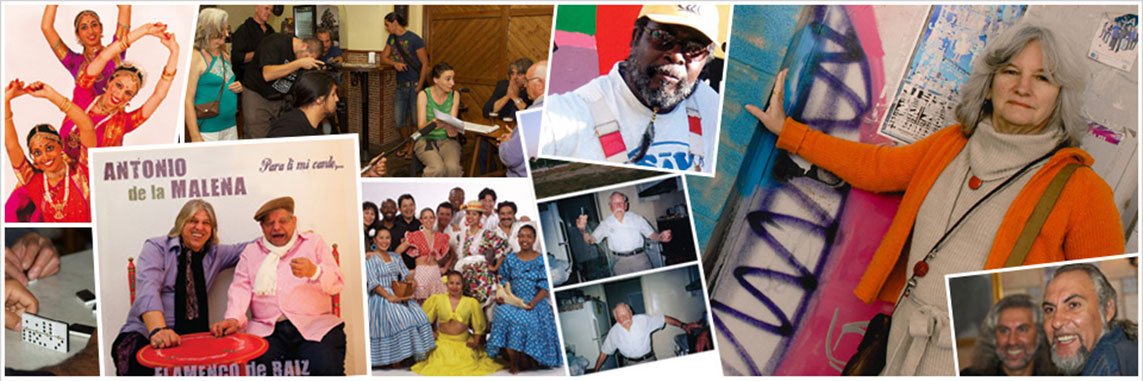We are used to thinking of immigrants from Mexico and other Latin American countries, and tend to forget the many millions of immigrants who came to the United States from Europe in the early 20th century - or, if we do think of them, we often assume they had an easy time of integrating into American soceity. However, this is not the case.
Immigrants who came to the United States from countries such as Italy, Spain, and Portugal were discriminated against, much as Latin American immigrants are today. They were called criminals, it was often assumed that they were stupid, they had to overcome the language barrier, they worked long hours for low wages...in a word, they often had a very hard time of it.
Heads were measured to "determine" brain capacity. Sociological studies were made to identify "innate criminal tendancies." Talk of labor organizations and the dreaded word "socialism" were bandied about with fear and loathing.
There was one significant difference, however: in many cases, it was assumed that eventually the children of these immigrants would assimilate, abandon the language and customs of their ancestors, adopt the language and customs of native-born Americans, and become citizens.
 In the early 1900s, tens of thousands of people from Spain, mostly country folk, left their native land. Spain was in the middle of a serious economic downturn. There was no work and not enough food, especially in the countryside. People left for any place where there seemed a reasonable chance of taking care of their families: Brazil, South Africa, Argentina, Hawaii....
In the early 1900s, tens of thousands of people from Spain, mostly country folk, left their native land. Spain was in the middle of a serious economic downturn. There was no work and not enough food, especially in the countryside. People left for any place where there seemed a reasonable chance of taking care of their families: Brazil, South Africa, Argentina, Hawaii....
In the case of Hawaii, the owners of sugar cane and pineapple plantation owners were in need of labor. Hawaii had only very recently been annexed by the United States, and the plantation owners sent agents to Spain to find laborers. The contracts they offered required a minimum three year commitment but in return, the immigrants were promised food, free housing, some free medical care, free schooling for small children, and a modest wage.
Between 1907 and 1912, a little under 10,000 of these Spanish immigrants came to Hawaii, bound by three-year or five-year labor contracts. Almost everything between making the decision to leave, and their arrival at the plantation which had hired them, was difficult, ardurous and confusing - including the crossing, since this was before the Panama Canal opened and the ships had to pass around the stormy Cape Horn.
Once they had arrived, they faced many of the same challenges that other immigrants to the United States have encountered: having to start all over in a country whose language they did not speak, working long hours for low wages, encountering food and customs with which they were not familiar, and so forth. An important difference, however, is that it was hoped and expected from the start, by those who brought them over, that they would eventually become U.S. citizens.
And in spite of the confusion and hardships, they did persevere and survive. Many, once their contracts were up, decided to move to California rather than stay in Hawaii or return to Spain. In Spain, after all, there was not always enough food to eat, and California by reputation had the same climate as their native land, meaning they could grow the same foodstuffs and work in the same type of farms as those to which they had been accustomed. They also welcomed the offers of citizenship. And so their American stay became permanent and their descendants, native-born Americans, now for the most part live in Northern California and have become native or near-native English-speaking white-color workers and professionals.
 Palomino Productions (whose legal name is Palomino Pro, LLC) is the production arm of filmmaker Eve A. Ma. Productions include her more than 15 documentaries, several experimental shorts, and a one-hour drama. Here are some highlights.
Palomino Productions (whose legal name is Palomino Pro, LLC) is the production arm of filmmaker Eve A. Ma. Productions include her more than 15 documentaries, several experimental shorts, and a one-hour drama. Here are some highlights.
Ma’s work has been in festivals and important events in eight countries on four continents (North America, South America, Europe and Asia). Her work has won awards, and much of it is presented in two languages – English and Spanish. Her principal concerns are ethnic and cultural diversity, the arts, and communicating across boundaries. As she explains, “I’d like everyone to walk a mile in someone else’s shoes.”
Major work in HD includes the documentary Masters of Rhythm about Afro-Peruvian music and culture; and the drama Domino: Caught in the Crisis (Dominó: agarrado por la crisis) . Masters of Rhythm has been broadcast throughout the United States over PBS and other educational channels.
In addition, Ma created a series of broadcast one-hour documentaries about world music and dance, including one about southern Indian classical dance and music called Of Beauty & Deities: Music & Dance of India. Another in this series, A Zest for Life: Afro-Peruvian Rhythms, a Source of Latin Jazz, has been made available for national educational broadcast through NETA (National Educational Television Assn.). Other work includes experimental shorts shot in Spain and the United States.
To learn more about Ma’s films, go to www.PalominoPro.com or sign up for her monthly Newsletter.
